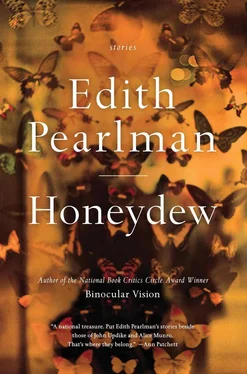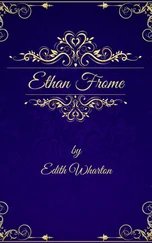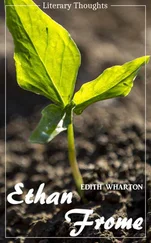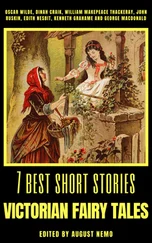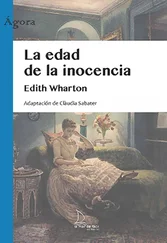Retransformation, really. Their father had already been transformed from a hearty man into an invalid. So Mindy and her sisters wanted to return to what they’d all lately been — a reasonably contented family of six: two parents; one maiden aunt, Cecile— she chose the latest Perry Mason from the stack; and three princesses, otherwise called daughters. “Fairy tales always have three daughters,” Thelma noted. “The older two are mean, the youngest is nice.” At twelve, Tem was the youngest. “Though Beauty’s sisters are not so bad…”
“Three sisters are endemic in drama,” said Talia, the oldest. “Chekhov wrote a play of that very name, and think of Lear…”
“I never think of Lear,” said Mindy.
“What’s a Lear?” said Tem.
Talia at sixteen was the family intellectual. She was in the eleventh grade’s first group in the three-track high school. Mindy, two years younger, was in the ninth grade’s first group. Tem was still in untracked grammar school.
Talia persisted. “Lear, a king, had three daughters: Regan, Goneril, and Cordelia.”
“In the gender category our family doesn’t balance,” Mindy said, disregarding those made-up names.
“Dad and Mom hoped you’d be a boy,” Talia told her.
“After me they hoped that Tem would be a boy,” Mindy said.
“I am a boy,” Tem said. “Sometimes.”
Whatever Dr. and Mrs. Margolis had hoped for, they expressed only satisfaction with the brainy, underweight Talia, the curly, pretty Mindy, the sturdy Tem. Tem had a talent for drawing — faces in particular — which she exercised with particular vehemence during her father’s recovery. It was Tem who had first lit on Masters of Deception. She soon learned to reproduce the optical illusions at the beginning of the book. Her favorite was the standard schema of profile confronting matching profile with a space between them. Anybody staring at the drawing got freed suddenly from profiles and found herself looking instead at the silhouette of a vase created by slanting foreheads, prominent noses, rounded lips, and jutting jaws. Tem drew pairs of matching profiles with a neat vase between them, and then pairs of nonmatching profiles producing severely asymmetrical vases in danger of falling over.
As for Legends of the Jews, all three girls could see Dr. Margolis, through the half-open bedroom door, propped up in bed with one of the volumes splayed on his lap. Every so often he turned a page. So Talia abandoned Deception and chose a volume of Legends for herself and read it in the living room on her father’s leather recliner. She copied phrases into a spiral notebook. Uninvited, she read pages from the Legends out loud to her mother, who, Mindy noticed, only seemed to listen; to Tem, who glared as if annoyance could transform Talia into a pillar of salt; and to Mindy, who liked the thought of God becoming soft, melting like a watch, saving Isaac, saving Jonah.
But Mindy liked best the paintings of Arcimboldo. He was a famous sixteenth-century Italian, the book told her. His portraits were composed of fruits, vegetables, and flowers. That is, he painted representations of fruits, vegetables, and flowers so arranged that together they formed the likeness of a grotesque person. They had helpful titles, and after a while you saw that, say, the portrait called Autumn, a face in profile, had a pumpkin for a hat, grapes for hair, a potato for a nose, a cherry for a wen. His cheek was an apple, his ear a lemon slice. The Gardener, an assembly of oversize root vegetables, bore an unhappy resemblance to Rabbi Goldstone. Each vegetable or piece of one was rendered so precisely that Mindy wanted to eat it right off the page, or, if hygiene demanded, plunge it into boiling water first.
Fruit played its part in the Legends too, Talia told her: Eve’s apples of course, but also many other juicy foodstuffs, like pomegranates. “‘Moses was commanded to cause a robe to be made for Aaron,’” she read. “‘Upon the hem of it thou shalt make pomegranates of blue, and of purple, and of scarlet…and bells of gold between them…Aaron’s sound shall be heard when he goeth unto the holy place before Jehovah, and when he cometh out, that he die not.’”
Mindy’s class had done mythology last year. “In Ancient Greece the pomegranate was a symbol of death.”
“Shut up,” Tem said to both her sisters.
There were no pomegranates in Arcimboldo’s work, but there was all that familiar produce. It reminded Mindy of Louie the vegetable man.
Louie the vegetable man was not composed of fruit or vegetables. He was composed of a cap, a face with little eyes and a big nose and a mouth missing some teeth, and a pile of assorted clothing from a junk shop. He was called the vegetable man because he owned a fruit-and-vegetable truck.
Before Louie the Margolises had had a different vegetable man — Paci, born in their middle-size New England city but of Italian descent, like almost one-third of the population. Another almost-third was Irish. The third nearly third was Yankee. There were Negroes too, slighted in so many ways — housing, city services, schools, employment — that it was a wonder they didn’t revolt. To Roz, instructed in hierarchies by her beloved Marquand, the city’s ethnic groups formed a ladder — Yankees on top, then Jews, then Italians, then Irish, then a bunch of others like Armenians, then Negroes. She graded Jews within their category too. On the Jewish ladder the rungs were occupations: professors on top (there was one Jewish professor in the local college), then doctors, then lawyers, then businessmen (unless very successful, in which case they moved above lawyers). Beneath middling businessmen were high school teachers, inevitably unmarried, living with their mother or taking up residence in their younger brother’s house, like plain Cecile; and then people who worked with their hands, like chiropodists, and then tailors who worked on their knees. Beneath tailors were vegetable men. Like the lone professor, there was just one of those, Louie.
These rankings were flexible; personal characteristics like beauty, musical talent, and tragedy could elevate a person’s status. Murky pasts, schnorring relatives, disappointing children, and the failure to marry could lower it. This ordering of people, Talia informed her sisters, was rather like the divisions in heaven, where…
“Don’t tell us!” Mindy said.
Talia’s eyes watered. Mindy had noticed that Talia was less know-it-all these days, even though her new glasses made her look like a genius. That was paradoxical, Mindy thought (she was improving her word power).
“Okay, tell us,” Mindy relented.
“ You are not heavenly material,” snapped Talia, recovering. “Here on earth Mom’s rankings show how uneasy she is about us.” Though by being children of a doctor they occupied the next-to-highest rank, Talia explained, there was always the danger of unfortunate friendships leading to inappropriate attachments or — God forbid — inappropriate marriages. “Mom’s seen it happen in life, she’s seen it in—”
“I will marry an appropriate prince,” said Tem, who was apparently a girl today.
“—Marquand. So she wants to teach us where everybody stands.”
Their mother’s instruction was casual: murmurs over the slender shoulder as she stood at the sink, her face not quite in profile — curls obscured a portion of the smooth brow and the cheek, and all you could see was the brief nose. Or perhaps during a trip to the ice cream store: pretty Mrs. Margolis and her girls. Of Mr. Shapiro, who sold insurance, she confided: “Men in the insurance business can’t make a living doing anything else.” Of a nurse at the hospital, an ebony beauty: “I wonder if white boys fall for her.” Sex appeal could lead directly to miscegenation. Of Mrs. Barrengos, who’d attended college out of town and didn’t play canasta and wore prewar clothing: “She’s like a Yankee.” Embezzlement could move somebody’s level from high business to criminal (below vegetable man). The discovery that a seeming aristocrat was in fact Jewish moved him above even the Yankees he had infiltrated. Roz Margolis liked Houdini, or at least the idea of him.
Читать дальше
